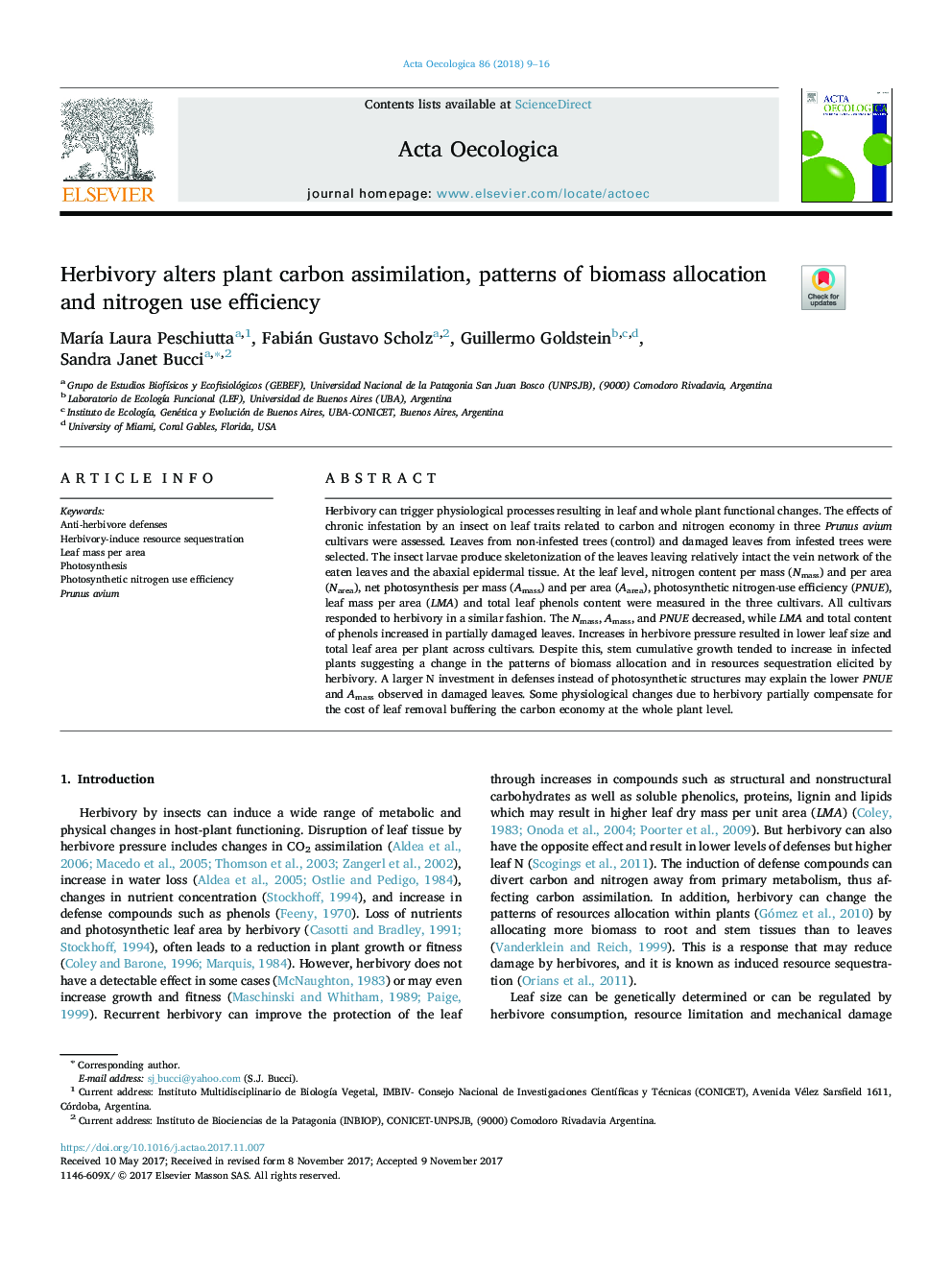| کد مقاله | کد نشریه | سال انتشار | مقاله انگلیسی | نسخه تمام متن |
|---|---|---|---|---|
| 8846529 | 1617686 | 2018 | 8 صفحه PDF | دانلود رایگان |
عنوان انگلیسی مقاله ISI
Herbivory alters plant carbon assimilation, patterns of biomass allocation and nitrogen use efficiency
ترجمه فارسی عنوان
گیاهان تغذیه، جذب کربن گیاه، الگوهای تخصیص زیست توده و بهره وری مصرف نیتروژن را تغییر می دهد
دانلود مقاله + سفارش ترجمه
دانلود مقاله ISI انگلیسی
رایگان برای ایرانیان
کلمات کلیدی
موضوعات مرتبط
علوم زیستی و بیوفناوری
علوم کشاورزی و بیولوژیک
بوم شناسی، تکامل، رفتار و سامانه شناسی
چکیده انگلیسی
Herbivory can trigger physiological processes resulting in leaf and whole plant functional changes. The effects of chronic infestation by an insect on leaf traits related to carbon and nitrogen economy in three Prunus avium cultivars were assessed. Leaves from non-infested trees (control) and damaged leaves from infested trees were selected. The insect larvae produce skeletonization of the leaves leaving relatively intact the vein network of the eaten leaves and the abaxial epidermal tissue. At the leaf level, nitrogen content per mass (Nmass) and per area (Narea), net photosynthesis per mass (Amass) and per area (Aarea), photosynthetic nitrogen-use efficiency (PNUE), leaf mass per area (LMA) and total leaf phenols content were measured in the three cultivars. All cultivars responded to herbivory in a similar fashion. The Nmass, Amass, and PNUE decreased, while LMA and total content of phenols increased in partially damaged leaves. Increases in herbivore pressure resulted in lower leaf size and total leaf area per plant across cultivars. Despite this, stem cumulative growth tended to increase in infected plants suggesting a change in the patterns of biomass allocation and in resources sequestration elicited by herbivory. A larger N investment in defenses instead of photosynthetic structures may explain the lower PNUE and Amass observed in damaged leaves. Some physiological changes due to herbivory partially compensate for the cost of leaf removal buffering the carbon economy at the whole plant level.
ناشر
Database: Elsevier - ScienceDirect (ساینس دایرکت)
Journal: Acta Oecologica - Volume 86, January 2018, Pages 9-16
Journal: Acta Oecologica - Volume 86, January 2018, Pages 9-16
نویسندگان
MarÃa Laura Peschiutta, Fabián Gustavo Scholz, Guillermo Goldstein, Sandra Janet Bucci,
